The English Patient - 1962 Volvo P1800
This Jensen-built 1962 Volvo P1800 is a rare example of the breed
09/24/2018


Volvo Cars is betting its future on the P1800. After having a rough past few years, they're turning things around with new technologies and a fresh, distinctive design direction that owes its inspiration to the classic P1800, the company's most beloved flagship GT. The earliest of this series, the Jensen Motors Ltd.-built P1800, is now experiencing a renaissance of popularity, and we've spent time with an unusually original example.
Because--aside from the addition of the 1972-'73 ES variant--the 1800 didn't change visually in its 13-year, 47,485-unit run, you might not notice how different the early models were from those that followed. Volvo 1800 restoration parts specialist Don Thibault (Profile in Excellence, HS&EC #2) is the owner of our feature P1800, a 1962 model, and he explains how this Swedish automaker's only true sports car was born with a British accent.
"Volvo wanted to make a sporty car, but they didn't have the capacity to design and build one in-house," he says. After soliciting the winning design from Italy's Carrozzeria Pietro Frua (actually drawn by 24-year-old Swede Pelle Petterson, a Frua intern and son of Volvo executive Helmer Petterson), Volvo searched in Germany for body-building and assembly firms, talking with NSU and Karrosseriewerke Drauz, as well as the famous Karmann. "Karmann was busy building convertibles and Karmann Ghias for Volkswagen--and Volkswagen probably didn't want the competition, anyway."
And so the production version of the sporty 2+2--powered by Volvo's new B18 four-cylinder engine and using sturdy 120 Amazon mechanicals--would come from Great Britain. Bodies would be built by the Pressed Steel Company's plant in Scotland, while final assembly would be handled by Jensen Motors in England, also home to Austin-Healey 3000 production. The first 6,000 cars of the 1800 series (the only ones with the "P1800" designation) had issues with panel fits, but were concept car-like in their design and detail work.
Even if you aren't familiar with the details of the later 1800S and 1800E, learning about Don's 1962 gives you an appreciation for the time that Jensen employees took to build each individual P1800. "These cars had a lot of complex features that were simplified on 1964-and-newer Swedish-built models," he muses. "The rear area originally had a cubbyhole with individual jump seats. I've taken them apart, and there are lots of tiny Phillips-head screws that have to be carefully installed a certain way. When they went to the bench seat on the S cars, it was five minutes...plug it in, a couple of screws, it's done.
"The Jensen cars used heavily chrome-plated brass for their bright trim, inside and out," Don continues. "The strips on the interior door panels were plated solid brass, held on with little clips that had to be installed by hand--this continued all the way around the interior in a complete circle. When they moved production to Sweden, the door strips were replaced with pre-formed plastic that was glued onto the panel, and the rear compartment trim disappeared. The exterior chrome became cheaper plated aluminum and polished stainless steel. It was very labor-intensive to build, at first; the English were used to that, everything they did was by hand."
Not seen on later models, other special items you'll find on our gray-over-red feature P1800--one of three color combinations offered in this series, the others being white-over-red and red-over-white--include the "bullhorn" front bumper, the elaborate egg-crate grille and cowl vent, white front indicator lenses, full hubcaps and beautiful C-pillar Volvo script.
Don's 1962 is remarkable for its unusual degree of factory originality, as most remaining examples aren't this way because of the easy interchangeability of 1800 parts. "Due to the age of the cars, over the years, many of the Jensens have been bastardized--they suffered a lot of abuse. The interior would start to look shabby, and since Volvo discontinued many things, owners would put in parts from a newer S. I owned a couple of Jensens before this one, but each one of them wasn't original--it was a mixture of different cars, done badly. Early cars, in the early years, didn't get any respect; that's why it's so rare to find one with original parts on it."

More than 50 years after they left West Bromwich, you can still inspect the original hand-written records of individual P1800s, thanks to the excellent website, www.volvo1800pictures.com. Through this, Don was able to confirm that his car, bearing the Pressed Steel-supplied body number 4304, Jensen Motors-supplied chassis number 3329 and Volvo engine number 3154, was intact, and it had started production on March 22, was finished on April 6 and had been shipped on May 7, 1962. This car has the optional M41 four-speed manual transmission with Laycock electric overdrive, and its five-main-bearing, twin SU-carbureted, 100-hp 1,778-cc four has covered fewer than 80,000 miles in its 52-year life.
And that mileage was because the P1800 sat idle for an extended period, its current owner discovered. This car found him, because of his related profession. "I bought it in 2001. Prior to that, it had been sitting in a barn in Southboro, Massachusetts. An electrician came in to get the house ready for sale, and saw the car, which he thought was neat. It was just an old car that had been sitting a long time--it barely ran and had no brakes. He bought it, and then realized he didn't know how to fix it. The electrician discussed it with his insurance agent, who also thought it was a neat car, and who bought it from him. And then the same thing happened--the insurance agent also realized he couldn't fix it up. He found receipts in the car for parts I'd sold the previous owner--radiator hoses, miscellaneous maintenance items--and that's when he called me."
When Don inspected this car, he found it was largely untouched, and for being a New England car all its life, its body shockingly had no rust. It was engine trouble that kept it tucked away, a common issue with early 1800s: water in the gas, due to the location and design of the fuel filler on the rear deck. "I'd been looking for a Jensen for a while, so I ended up buying it. This was an unrestored car, which I could tell as soon as I looked at it. The paint was poor, but I saw that the original vinyl upholstery wasn't ripped, the original door panels were intact, the factory molded rubber mats were still up front. I don't know how many 50-year-old Jensens still have their original seats--you can probably count on one hand.
"It had the original tool bag, the jack handle and jack, and the original spare tire cover. It even had the original glass bowl fuel pump and the factory-installed spark plug wires," he says with amazement. "It didn't need much to get running again: drain and flush the fuel tank, and essentially perform a tune-up. Although those plug wires are still on, they've never given me a hard time! It needed paint to be presentable, and I had to put a later-style rug in the front to replace the rubber mats, which crumbled when I took them out of the car--nobody reproduces them. I tried to do a sympathetic restoration, to keep the original features as much as possible."
And that's what this Volvo now is--an internal-combustion time warp. The re-sprayed deep gray paint contrasts beautifully with the body's still-brilliant 52-year-old chrome and the jukebox feel of the colorful red, silver and black interior, with its three-dimensional, turquoise-accented Smiths gauges. Don is right--this car is filled with delightful details that were quickly lost as the 1800 was standardized and its production streamlined in Sweden. Happily, it drives as well as it looks, starting at the first twist of the key and settling to a smooth idle, showing no less than 100 pounds of oil pressure when cold, 70 when it's at temperature. The gearbox is the definition of "snick-snick," and the ride is comfortable, cruising smoothly on the highway in overdrive.
"I've driven it as a pleasure car, taken it to shows where it's won its class. It's been very reliable and fun to drive--it's a sweet, straight car. Today, people are hungry for early production Jensens. Looking back at the provenance of the 1800, it had to have been a huge undertaking for a small manufacturer to come up with a car like that in that era," he says. "I actually restored an identical, earlier-numbered Jensen P1800 a few years ago, but I sold it. That one actually looked a bit better since everything was fresh and rechromed, but it had been redone. There's nothing wrong with redoing stuff--you have to do it if it's bad--but I believe there's truth in that old line: It's only original once."
Specifications
Engine
Type: OHV inline-four, cast-iron block and cylinder head
Displacement: 1,778 cc
Bore x stroke: 84.14 x 80 mm
Compression ratio: 9.5:1
Fuel delivery: Twin SU 1-inch HS-6 carburetors
Horsepower @ RPM: 100 @ 5,500
Torque @ RPM: 108-lb.ft. @ 4,000
Transmission
Type: Fully synchronized four-speed manual with electronic overdrive
Suspension
Front: Independent; A-arms, coil springs, telescopic shocks, anti-roll bar
Rear: Rigid axle, coil springs, telescopic shocks, trailing arms and track rod
Brakes
Type: 10 7/8-inch disc front/9-inch drum rear, servo assist
Weights and Measures
Wheelbase: 96.5 inches
Overall length: 173 inches
Overall width: 67 inches
Overall height: 51 inches
Curb weight: 2,490 pounds
Performance
0-60 MPH: 12.4 seconds
Top speed: 105 MPH
The classic VW Beetle is probably the single most iconic car ever made. Regardless of where you go, you will see a VW Beetle somewhere on the road. While the uninitiated may think they are uncomfortable and twitchy, the truth is that the interior of a Bug is kind of like Dr. Who's Tardis: it is a lot bigger on the inside that it looks. That doesn’t mean every Beetle you hop into is comfortable - the seats are very simple in design, using a smattering of steel springs and horsehair padding.
Our 1973 standard Beetle had the original seats with the original covers, which were in surprisingly good shape considering they are 50 years old. In fact, this car was built in May 1973. The seats were serviceable for a casual driver, but you could feel the springs moving in your back and posterior. The driver side cover was decent but the passenger side lower had developed some cracks, so their days were numbered. The Bug already had a big bore 1834-cc with twin carbs and custom cam, along with a Freeway Flyer trans and the car had been lowered 1.5 inches, so the interior needed some resto-modding to match. We picked up the phone and called TMI Products to see what they had to offer, and much to our surprise, the answer was quite a bit.
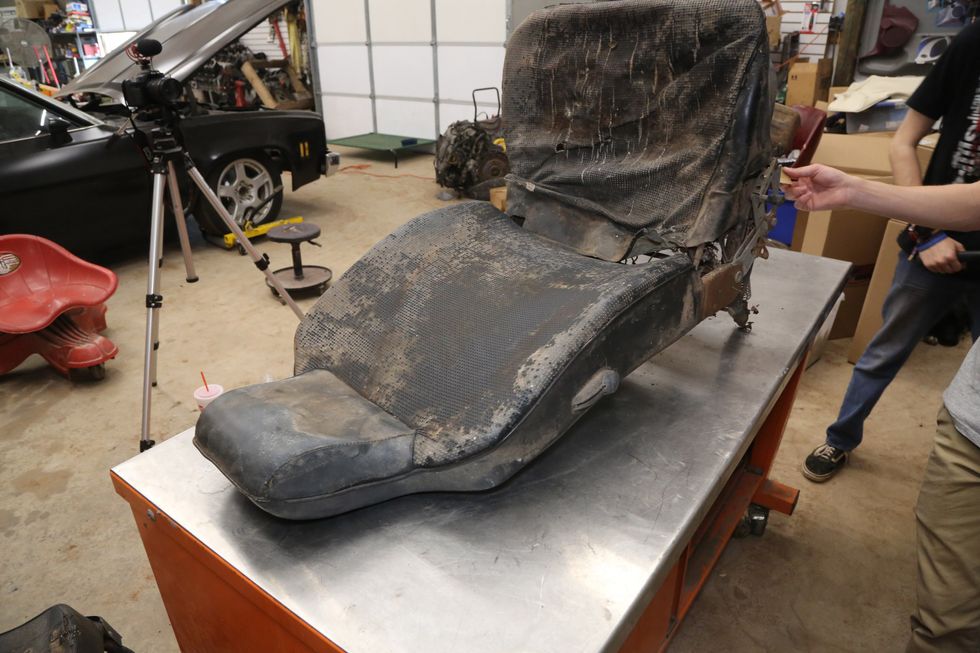
We expected a few stock patterns, and maybe a couple of ready-made custom layouts. Instead, we had a world of colors and patterns to choose from. This really opened the door to fantasy land, and in the end, we settled on a really beautiful turquoise houndstooth center fabric with a cream vinyl outer. This design was carried throughout the interior- front seats, rears, and door panels. This isn’t something TMI did special for us; this is how they operate, and it elevated the interior from stock to striking. Along with the covers, we also ordered a set of new seat foams, which allow you to ditch the stiff uncomfortable horsehair pads.
Once we had the covers off, we saw that these seats had been “customized” at some point with some cardboard over the springs to stiffen the seats. The original padding was quite stiff and had no give left. We removed all of it in favor of the new foams from TMI, which add much needed compliance to the cushions. There are a couple unique aspects of the VW seats. Instead of hog rings, the buckets use sharp metal tabs to pierce the upholstery. Because of this, you need some listing wire. The new covers do not come with this, but the original wire should be reusable if it is not badly rusted. If it is too far gone or missing, a little strip of bailing wire is a suitable replacement. The covers also use a drawstring on the bottom cushion to pull it tight. This is tied to either side of the frame.

We ran into a big problem on our seats when we took them apart, however. This being our first VW Bug, we were not aware that VW seats changed quite a bit and that they are often swapped around. We ordered covers for our '74 Beetle, and when we were ready to install the seat back covers, the new foams didn’t make any sense of how they fit. We called TMI tech support and sent some pics. Turns out we had 1973 seats; in fact, the car was a '73, but titled as a '74. The DMV must have made a typo, as the VIN matches. '73 Volkswagen seat backs are a one-year only, and we had covers for 1974-'76 seats. Luckily, we were able to find a set of '74 seat backs, which will swap over to the '73 lower frame, so crisis averted. Let this be a warning to you: before you order seat covers for a Beetle, check to make sure you have the right year. It was not something we thought to do, and was a clerical error on the vehicle’s title - even the guy we bought the car from told us it was a '74, so understand that you don’t know what you don’t know sometimes.
Installing the covers was a simple process. Each one takes about 20-30 minutes per section (back and lower), and we had both seats done in about 2-3 hours, all told. The finished seats shown here are without the plastic trim that they should have. One side on each of our seats had broken plastic trim, which we need to replace. That will be done later when we replace the dash and all the interior plastic trim parts at once. The new seats are much more comfortable and they look incredible inside the VW. They look great, and our backs and backsides appreciate the change.
Photo: Jefferson Bryant
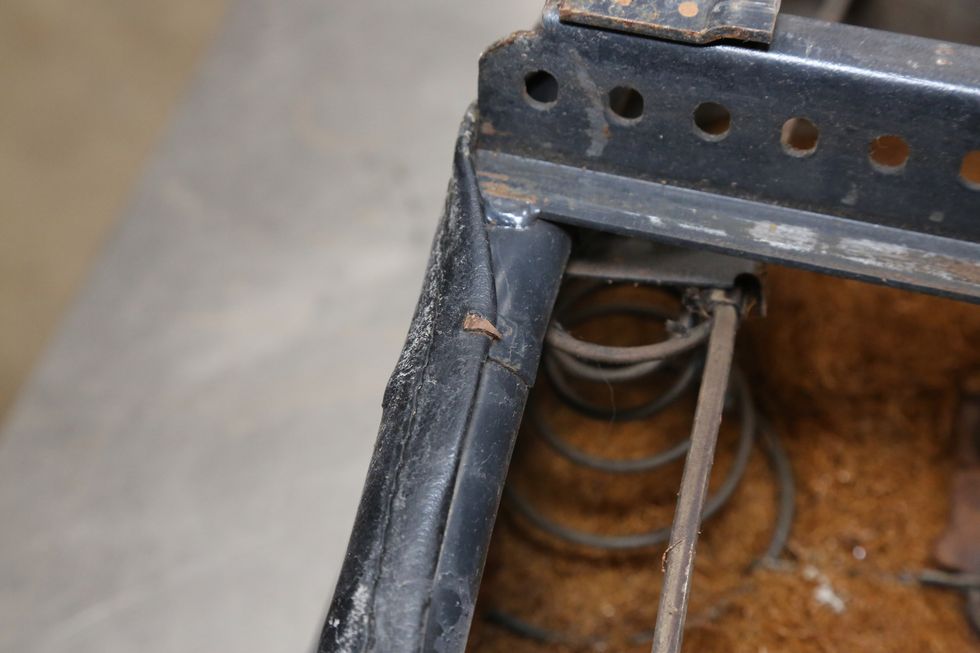

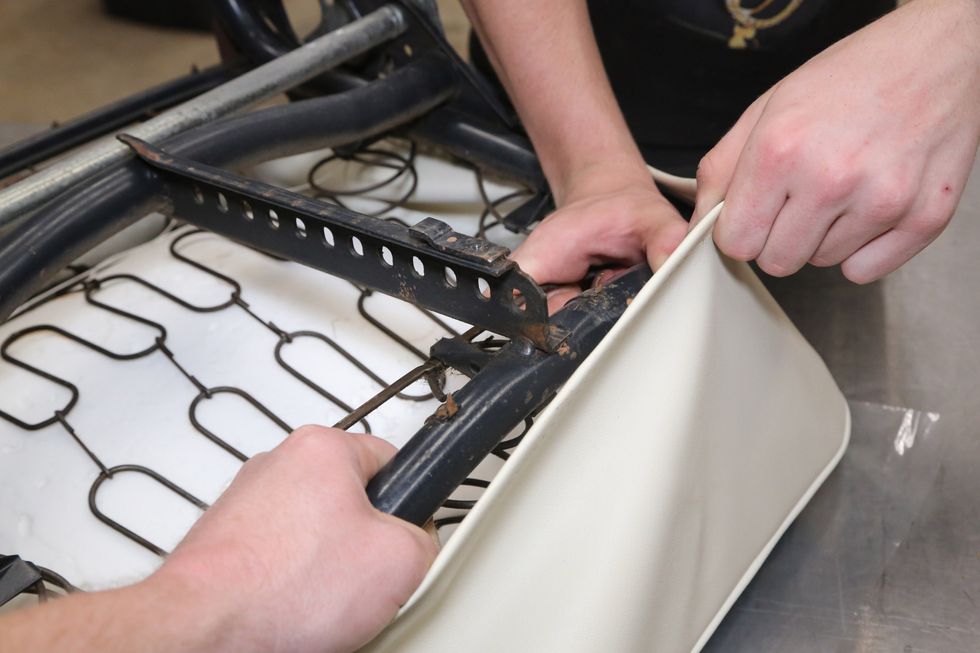



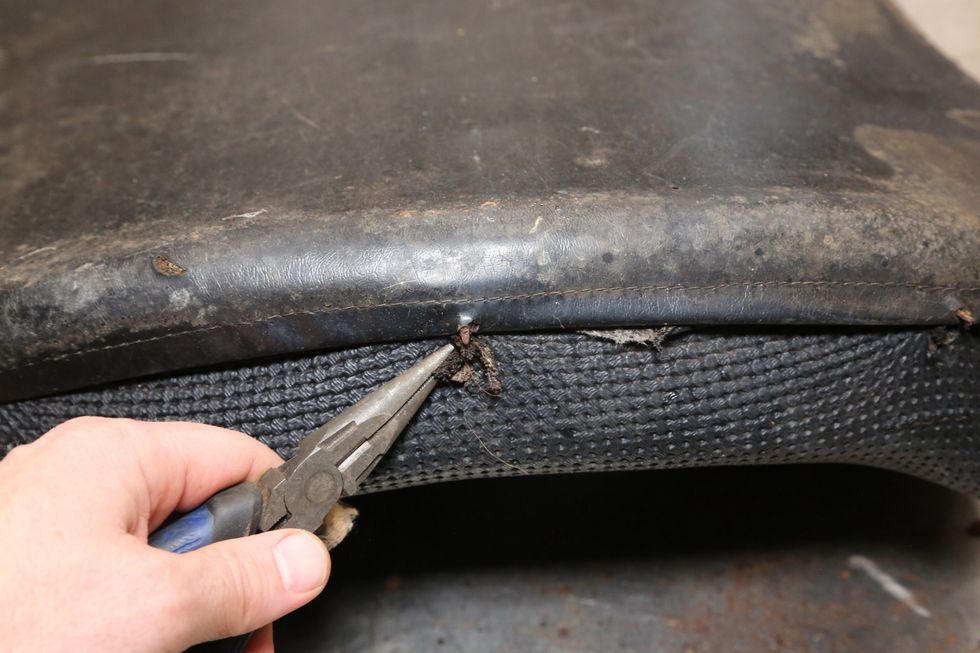
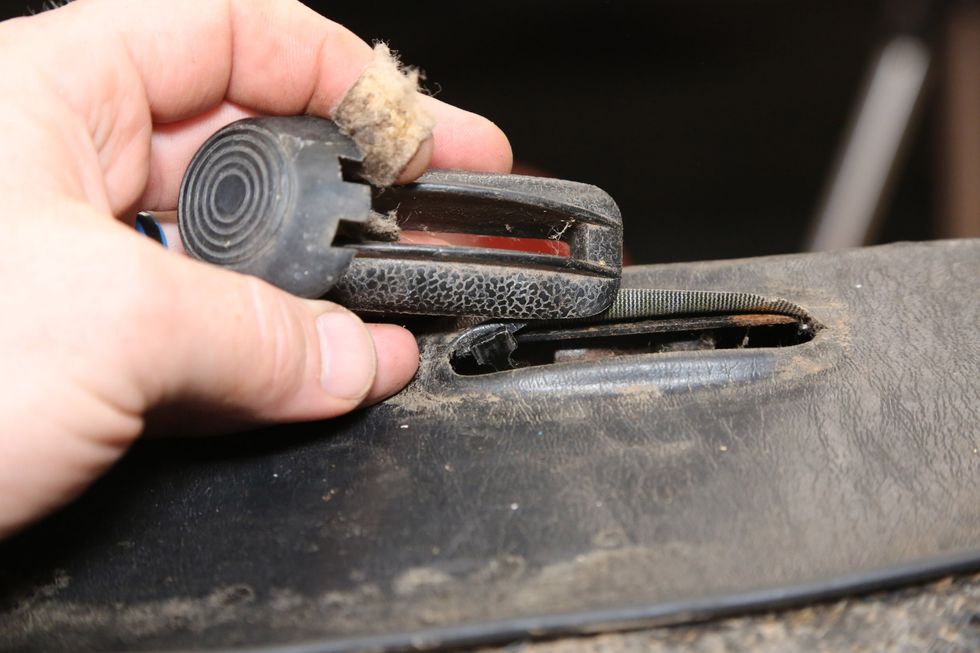



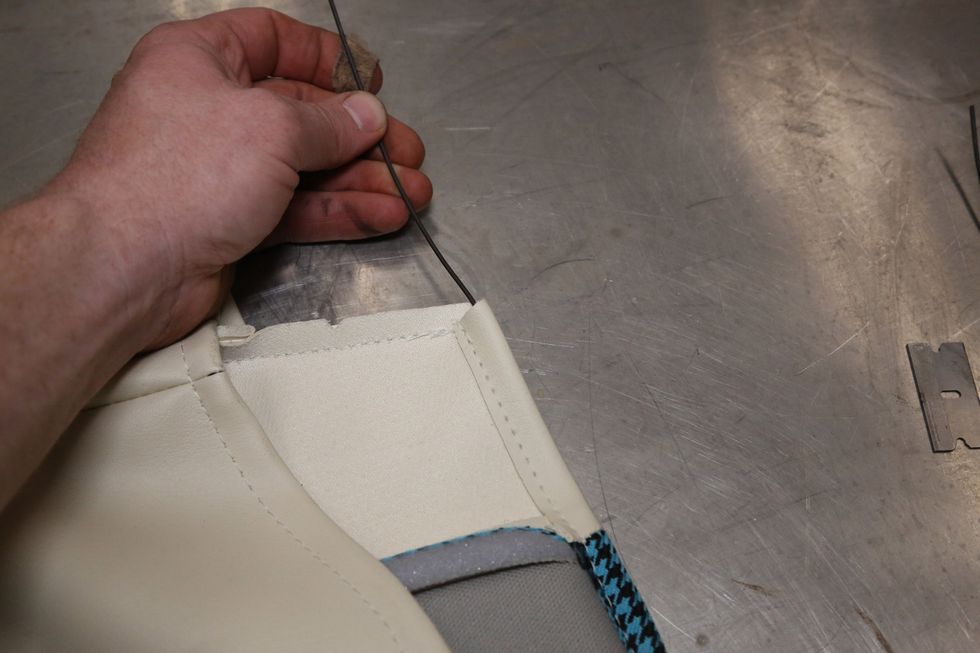


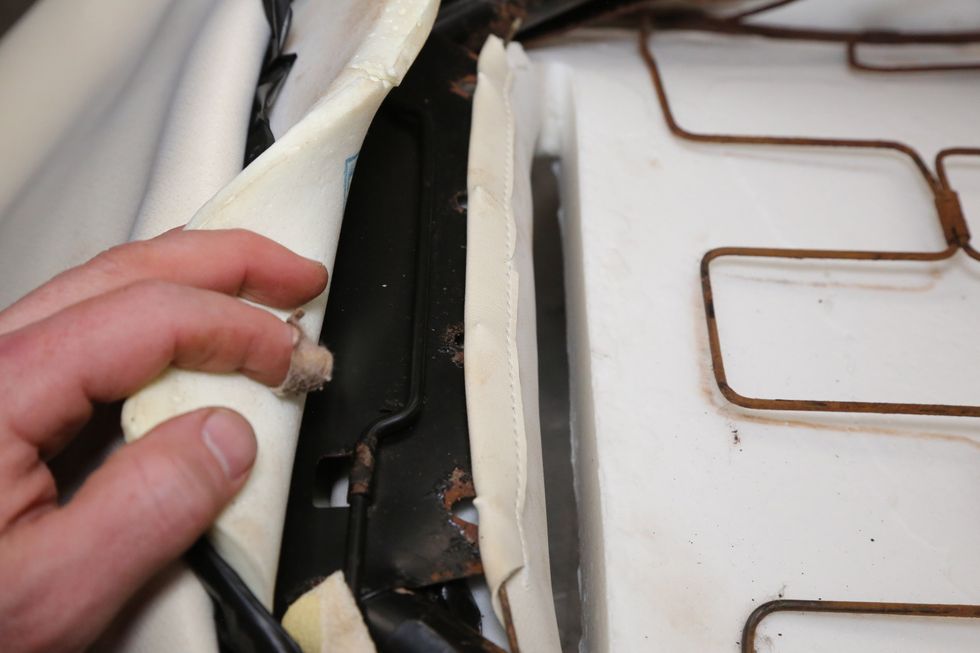
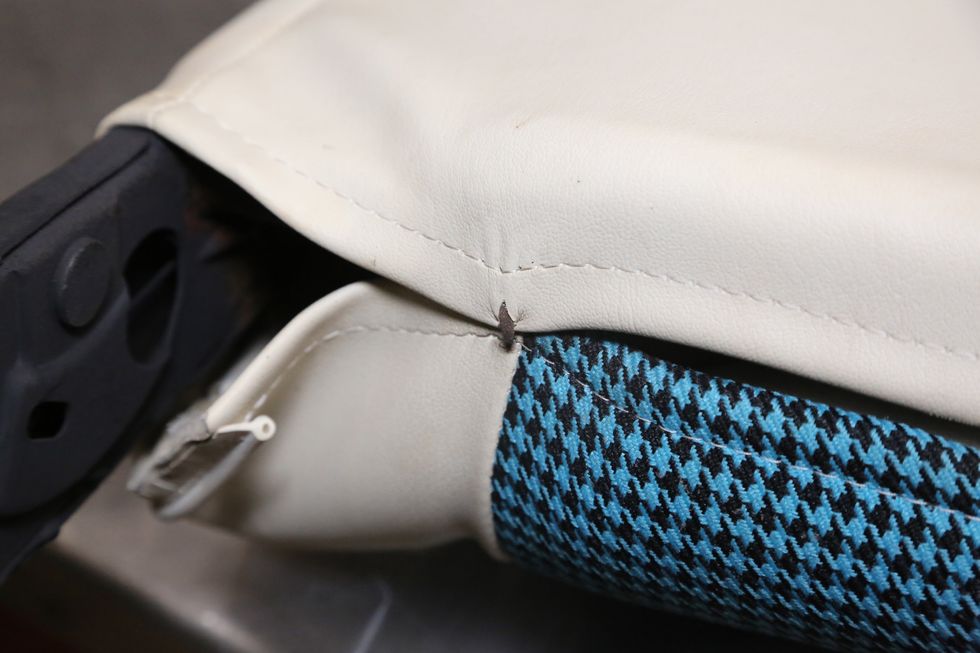


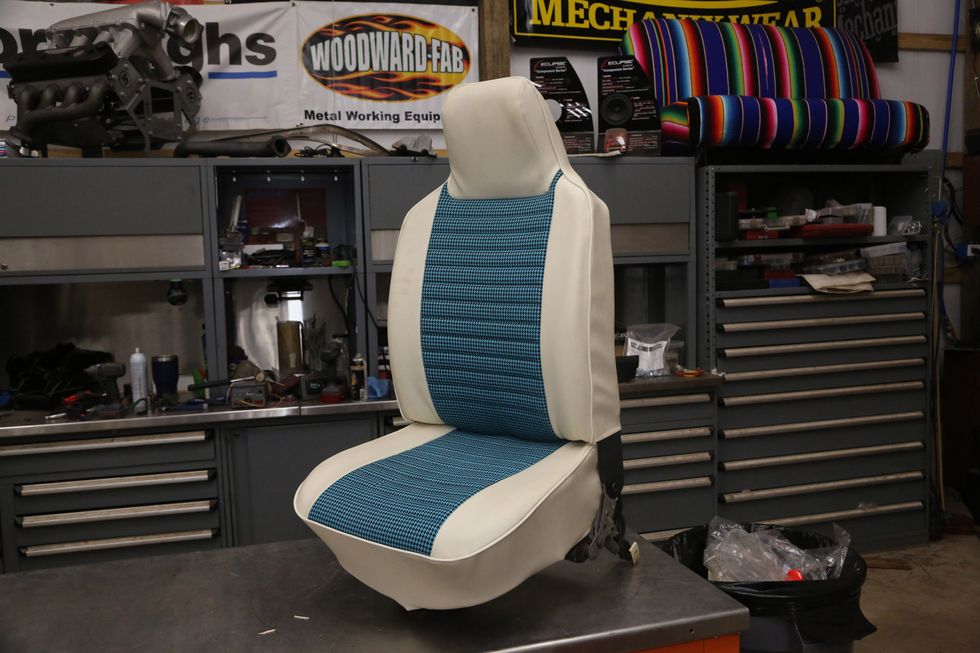
TMI Products •(888) 460-0640 • tmiproducts.com
“Gee, another iron small-block Chevy block? That’s hardly news.”
If you are an aggressively jaded LS engine enthusiast, this is probably not ground-breaking or exciting information. But despite inroads by the LS family, the small-block Chevy lovers of the world are not yet ready to give up on their venerated engine. It’s no secret that despite the bajillion small-blocks that Chevrolet produced over the decades that suitable cores for the popular small-block are disappearing at a prodigious rate. Of those survivors, optimal candidates for a performance build are becoming harder to find. Try to locate an affordable standard bore, 2-bolt 400 block today. If you do, the owner will want serious coin for a crusty casting.
But now there’s another alternative. Summit Racing recognized this shortfall and along with the BluePrint engine people stepped up for brand new tooling for a series of iron blocks. Just as importantly, the quality of the casting and machine work is impressive. The partners sought out a reputable casting facility in Germany to do the heavy lifting while the CNC machine work is finished here in the USA. So yes, the blocks originate from overseas, but these castings cross the Atlantic, not the Pacific.

Enough generalities. For small-block connoisseurs, the allure is in the details. Summit labels this new block the Street, Performance, Competition (SPC). The blocks are offered with a choice of two bore diameters of 4.00- or 4.120-inches. Plus you have the option of either a traditional two-piece rear main seal or the later one-piece version. Finally, the larger bore blocks are available in either the 350 main journal diameter or the larger 400ci version. Summit is considering also offering finished honed blocks as another option.
But this new SPC piece is not merely a duplicate of an earlier factory block. Right off, all blocks are cast using a stronger Class 35 iron alloy and employ nodular iron main caps. Like their production cousins, the center three main caps are attached with four bolts with 7/16-inch inners and smaller 3/8-inch versions for the splayed outer bolts that Summit’s Brian Nutter tells us the outer bolts are there mainly to limit lateral cap movement but also add additional bulkhead strength.
A critical point is that this block has been upgraded to priority main oiling. Production small-blocks lube the mains and rods only after first feeding the lifters. The addition of a dedicated main oil galley pushes oil directly to the mains to ensure the lower end is properly lubricated.
The deck height on these new blocks is shorter at 9.00 inches mainly because most aftermarket pistons are designed around this deck height. To improve head gasket sealing, the deck thickness is an impressive 0.600-inch and all the cylinder head bolt holes are blind. This means the head bolt holes do not intrude into the water jacket.

Speaking of coolant flow through the block, the block designers invested significant effort into improving coolant flow. The cylinder walls are siamesed which means the cylinder walls connect at the midpoint while increasing the volume around the tops of the cylinders by pulling the lifter valley walls inboard. This can be easily spotted by the pushrod clearance radius cuts made into the lifter valley walls. There are also pipe threads cut into the all main lubrication galleys to accommodate ¼-inch NPT plugs.
The cylinder walls are also strengthened. The blocks can accommodate up to a 4.185-inch bore diameter and still maintain a minimum wall thickness of 0.220-inch especially around the thrust surfaces. The as-delivered bore size for the 4.00-inch bore versions is actually 3.995-inch while the larger bores are at 4.120-inch to allow for honing to the standard diameters for piston clearance.
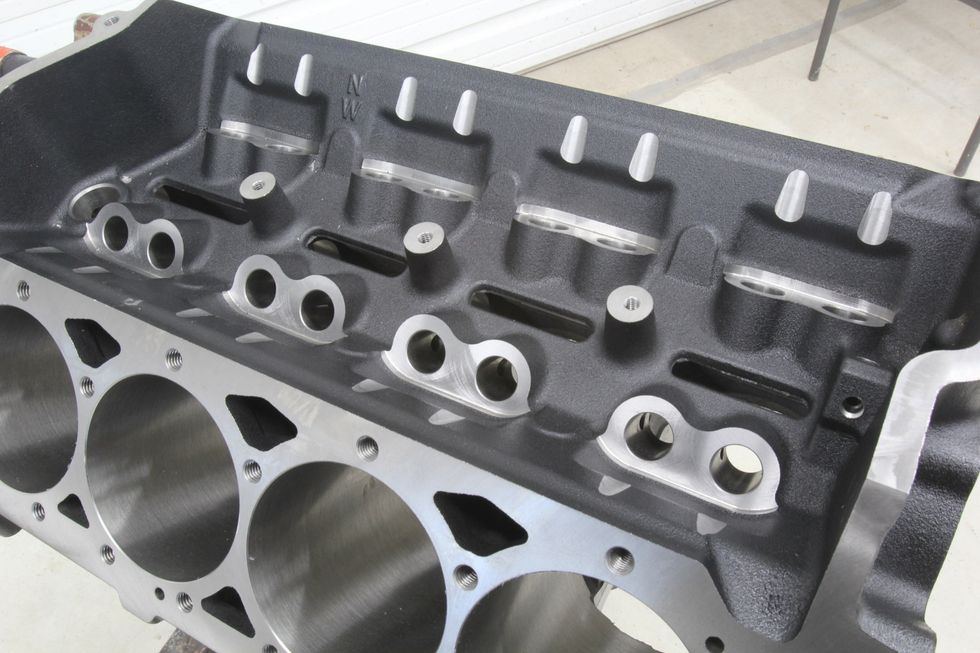
Another welcome addition is that all the blocks are fitted with provisions for a factory style hydraulic roller camshaft. Three pedestals are cast and threaded to attach the factory spider and the lifter bores are taller for use with factory hydraulic roller lifters. The camshaft height is also in the stock location so it will accept a standard single or double-roller small-bock cam drive.
These taller lifter bores do require a 0.300-inch taller roller lifter when using a mechanical or hydraulic roller, link-bar lifter and Summit notes that using these taller lifters means the heads must be removed to remove the lifters from the bores, much like an LS engine. This means that changing camshafts with taller lifters will demand removing the heads. Of course, this block can also be used with a flat tappet camshaft.

Summit’s Mike Schmidt tells us that these blocks are all machined on high-speed Makino CNC machines which not only leaves a very smooth, final surface but with computer numerical control the orientation of lifter bores to the cam centerline, among other positions, should be exceptionally accurate. Accurate valve timing would also contribute to making more power. It’s a subtle point, but this is the same approach used to build competition engines where accuracy is critical.
Another nice addition is this Summit block is machined for the factory hydraulic roller cam retention plate. If this plate is used this also demands a stepped nose style camshaft which eliminates the hassle of setting camshaft endplay clearance.

Moving to the bottom end, the block has been factory cast with reliefs in the area just above the oil pan rail to produce clearance (depending upon connecting rod design) for up to a 3.75-inch stroke. This area is cast solid so if additional clearance is needed, there are no coolant passages in this pan rail area to worry about.
To accommodate a wide variety of production block applications, the SPC block includes the stock mechanical fuel pump mount using a stock length pushrod along with the stock spin-on oil filter location. The stock three-bolt engine mounts are logically present along with three freeze plug provisions per side with two more front and rear. Keep in mind that this block will require two more brass freeze plugs compared to a standard small-block kit. In addition, you will need nine ¼-inch NPT Allen plug for all the oil galley and water jacket plugs along with a pair of 1/8-inch NPT plugs.

All these Summit blocks are machined for the later model, passenger side dip stick location which requires the same configuration oil pan. The engine is, of course, a wet sump design and is machined to accept the typical standard or high volume small-block or big-block Chevy oil pump.
The price of these blocks at the time of this writing is just north of $2,000, which might seem high to some. But considering that a machine shop will charge between $800 or more to clean, Magnaflux, deck the block to be parallel with the crank centerline, bore, torque plate hone, and align hone the mains. Add this to an initial used block cost of around $200 and you are halfway to the price of this brand new casting. Yes, you will still have to torque plate hone this new block but the quality of the machine work on the rest of block certainly adds significant value.

This new Summit SPC block may not be the first choice for the average basic engine rebuilder. But it does fill a need for the performance builder with aspirations of big horsepower numbers. Summit says this block is more than capable of reliably delivering 700+ horsepower and there are rumors of a 1,500-hp blown application that is putting the test to this new block.
There are other blocks out there that offer some or most of these same features but they do so with a much higher price. With all the excellent features, it is certainly worthy of consideration especially if your next project calls for a stroker crank and a roller cam. There are ways to maintain the budget and still built a quality engine. That notion just moved a little closer to reality with the Summit SPC block.




Summit tells us that by mid-summer, the company will be adding a big-block Chevrolet version of the SPC block, in the MK IV configuration. These blocks will be offered in 4.500 and 4.600-inch bore sizes with either two- or one-piece rear main seals. In addition, there will be a choice of a 9.800 or 10.200-inch deck heights. Like the small-block versions, these blocks will be cast in Germany and machined in the USA. A 4.600-inch bore with a 4.250-inch stroke on a standard-deck Rat motor would produce a 565ci Rat motor. At 1.25 horsepower per cubic inch, a normally aspirated, single four-barrel combination would produce just north of 700 horsepower.
All specs are in inches, unless otherwise noted.
Block material: Class 35 Iron Alloy
Block Weight: 181-194 lbs., depending upon bore size
Bore size: 3.996 or 4.120
Bore Spacing: 4.400
Maximum bore size: 4.185
Deck Height: 9.00” (+0.005 to -0.0003)
Deck thickness: 0.600
Cylinder head bolt holes: Blind
Main journal size: 350 style - 2.4485 / 400 style - 2.649
Main cap bolts: 7/16” Inner, 3/8” outer
Main cap material: Nodular iron
Clearance for 3.750-inch stroke: Yes
Cam location: Stock position
Min. cylinder wall thickness at 4.185”: 0.220”
Lifter bore size: 8.437 +/- 0.0003
Cam bearing bore size: 2.000 +/- 0.001
Lubrication system: Priority main
Machined for OEM hyd. roller lifters: Yes
Oil pan rails: Solid (no water jackets)
Starter motor bolt holes: Drilled and tapped for both straight and offset

When you invest this much into a very nice cylinder block, you want everyone to know where it comes from.
Photo: Jeff Smith
All parts in this list are sourced from Summit Racing.